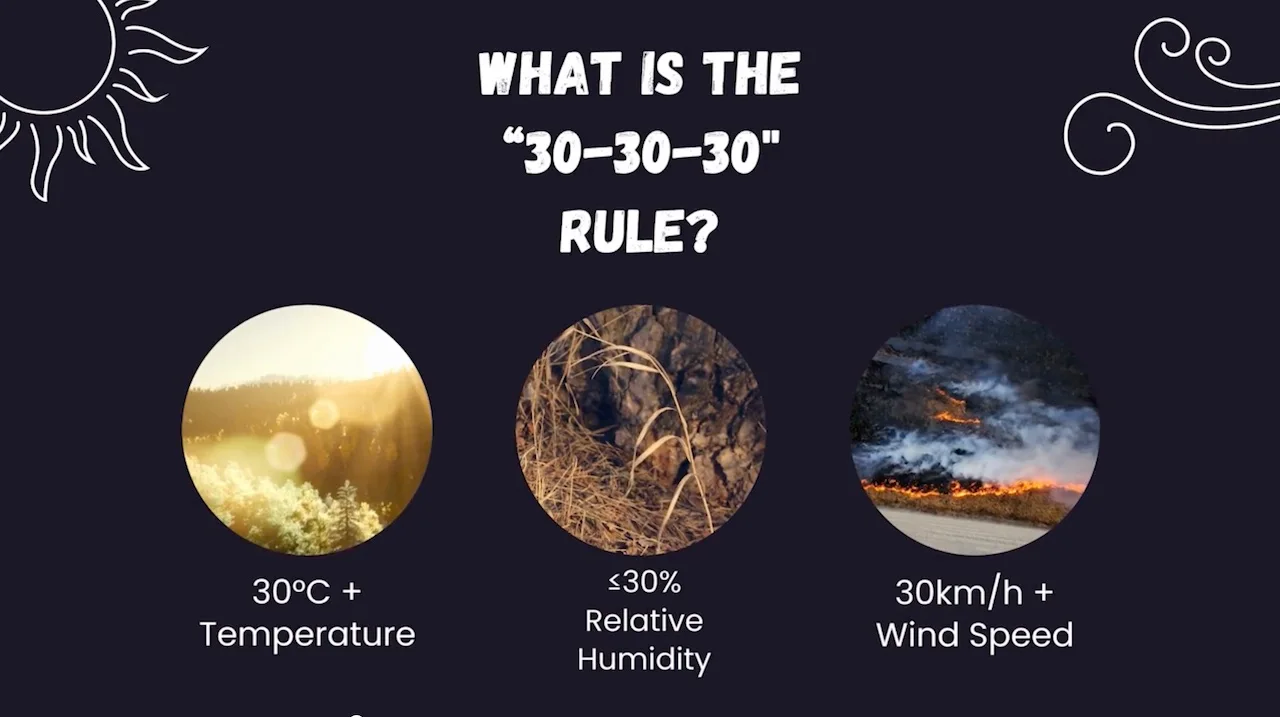
How the 30-30-30 rule is essential for wildfire safety
The Weather Network details the 30-30-30 rule that officials use to alert people when there is a threat of extreme wildfire behaviour
Wildfire season is getting busier across Western Canada, with evacuation orders and alerts in place as some blazes are getting dangerously close to populated communities.
A top-of-mind issue for millions of Canadians, especially if they live in wildfire-prone areas, the following rule can serve as a simple, yet effective way to assess the risk and potential danger posed by blazes.
CANADA'S WILDFIRES: Visit The Weather Network's wildfire hub to keep up with the latest on the active start to wildfire season across Canada.
You may have come across the 30-30-30 term when consuming a wildfire-related story. But, what is it, exactly?

(The Weather Network)
Brett Soderholm, a fire weather forecaster with the BC Wildfire Service, said 30-30-30 is a simplified guideline designed to make people aware of the threat for extreme fire behaviour.
To meet the "crossover" territory, temperatures would need to be 30 C or higher, relative humidity would need to be 30 per cent or lower, and the winds would need to be 30 km/h or greater.
"Essentially, [that] means that we could be seeing some very erratic and extreme fire behaviour. What I do want to emphasize, though, is that it is not a hard-and-fast rule," said Soderholm.
WATCH: Detect, track, and attack: How wildfire movements are monitored by the experts
He noted that even if temperatures don't reach 30 C, there could still be active fire behaviour if the relative humidity is rather low and the winds are quite strong.
SEE ALSO: Wildfires continue to ravage Western Canada
"Overall, it's a good ballpark to be aware of when things might get a little spicy," said Soderholm.
Thumbnail courtesy of Randy, taken of a West Kelowna/McDougall Creek, B.C., wildfire in August 2023.
Follow Nathan Howes on X, formerly known as Twitter.











